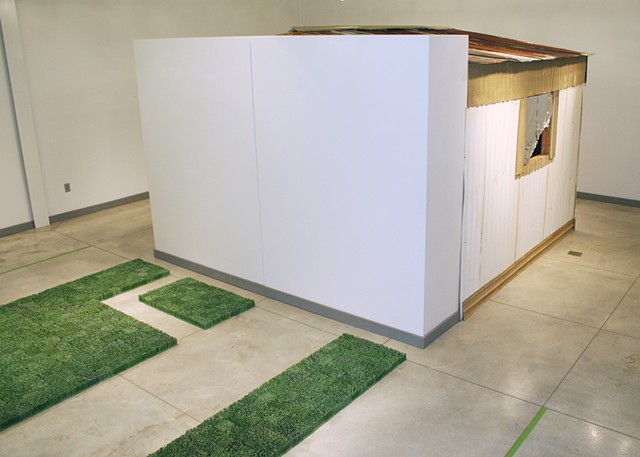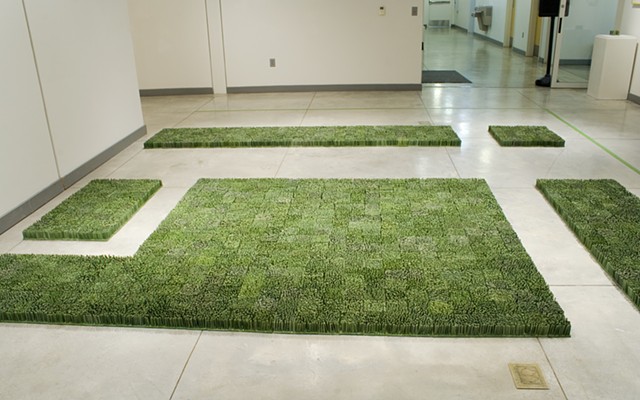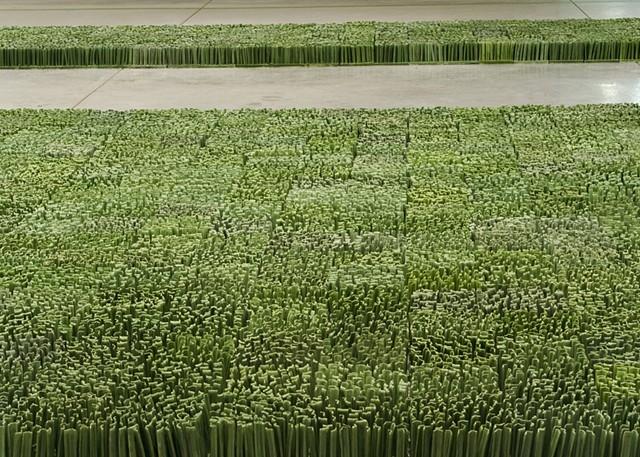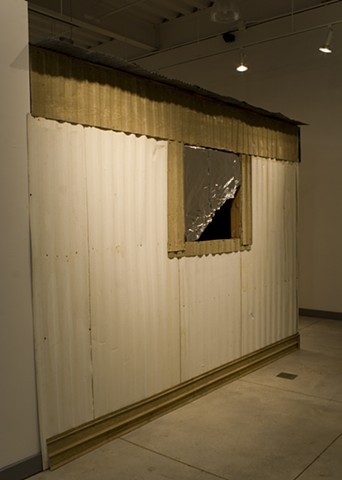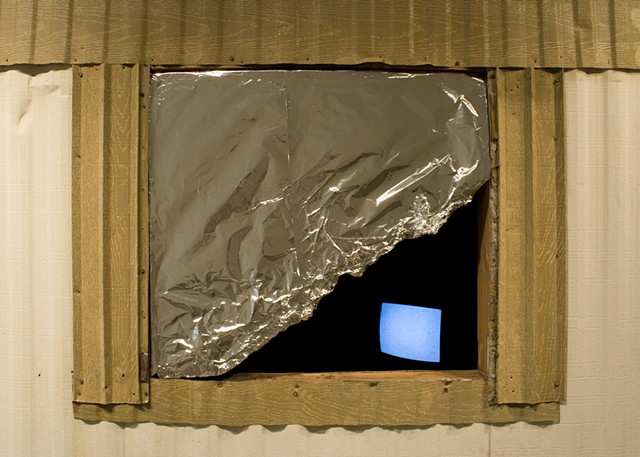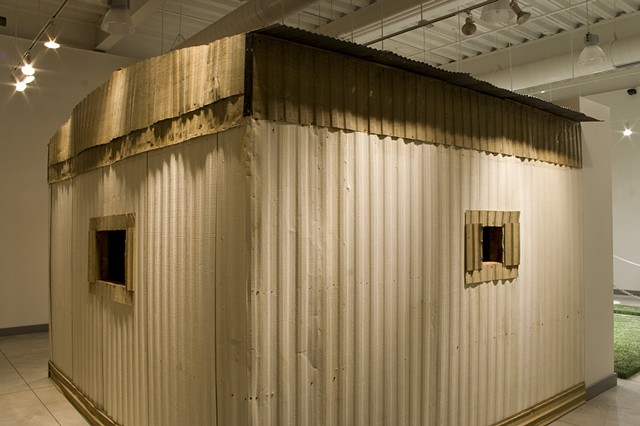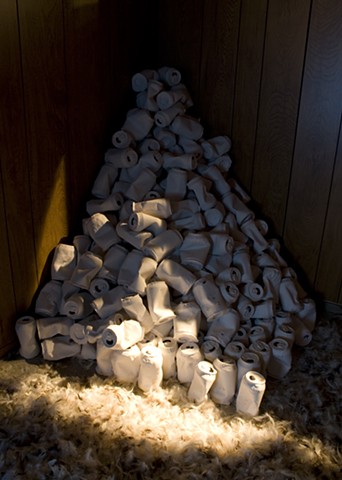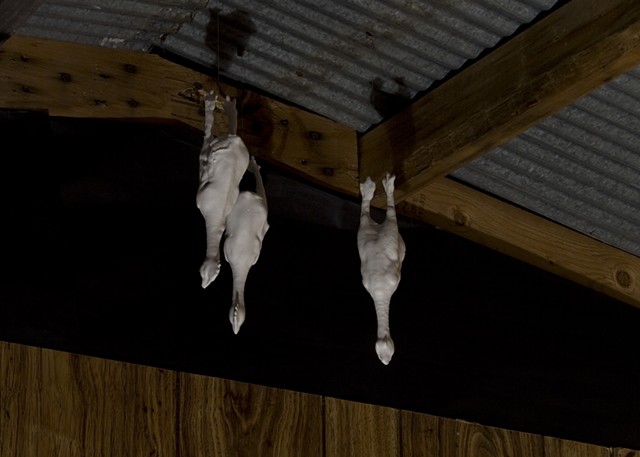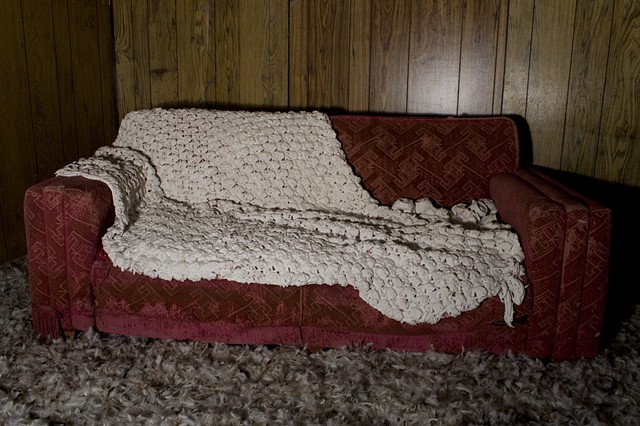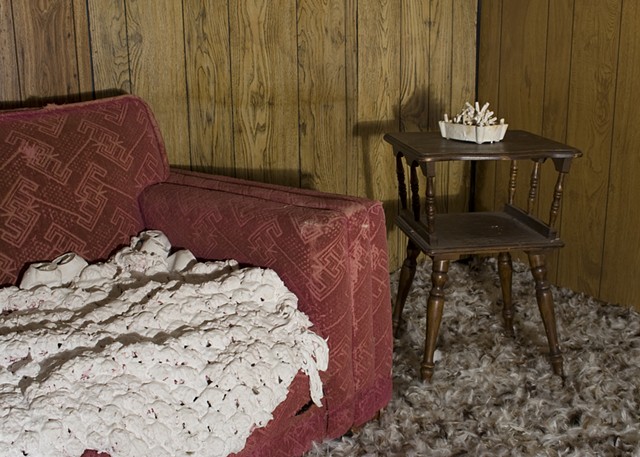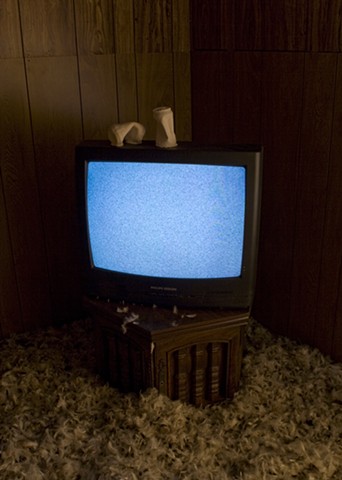Always Greener
"Always Greener"
Norman Hall Gallery
Arkansas Tech University
September 2013
Suburban Lawn Iteration is an obsessive installation that lawn investigates the lawn in its dual nature as "natural" space and cultural signifier. The repetitive labor involved the creation of the 75,000 blades of grass mirrors the suburban obsession with creating the perfect lawn. The extremely fragility of the porcelain speaks to the tenuous nature of our attempts to control the space around us, and how quickly control is lost when the system is left untended.
In contrast to this idealized and idyllic space stands Still Life with Trailer, a repurposed mobile home. Inside, the abject space stands in disarray. Objects covered in plaster become abstracted and speak to a sense of calcification, solidification, and entropy, while the television plays endless static. Without a way in or out, this state of being is difficult to escape.
Both of these pieces speak to the American dream, the idea that through education and hard work one can achieve upward mobility, which is epitomized by home ownership and participation in consumer culture. These two works represent opposite ends of the spectrum: the unachievable ideal and the stagnation of those cast off and discarded.
My studio practice focuses on ceramic and multimedia installations. My ceramic work is built with porcelain, and I often incorporate a variety of other materials chosen for their visual as well as sensory qualities, such as touch and smell. Clay lends itself to repetition, and I often create and use plaster molds to fabricate forms. I enjoy the directness of working with clay, its sensitivity and tactile qualities, as well as its versatile range of historical and haptic associations.
My installations range from uncanny, dreamlike environments to site-specific projects that address the collision of culture and landscape in a particular area. I am specifically interested in creating installation work because it confronts the viewer in terms of its complexity, scale, and physical space. Often the fragility and/or scale of the work changes the way the viewer moves through the space, creating a heightened sense of awareness. The viewer can enter the art’s space both mentally and physically, and be “among” the artwork, often becoming part of the work itself.
